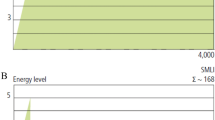Abstract
Objective: To analyse the impact of stone composition on stone fragility (fragmentation) and clearance of upper urinary tract stones after shock wave lithotripsy (SWL). Material and methods:Between 1st July 1998 and 31st July 2001, 300 renal and ureteric units of 290 patients (10 being bilateral) underwent SWL for upper urinary tract calculi. The degree of fragmentation was divided into four types: (I) Excellent, (II) Good, (III) Fair and (IV) No fragmentation. Stone composition was done by X-ray diffraction crystallography. A statistical comparison was made between degree of fragmentation, number of shock waves delivered, voltage setting, number of sessions required and requirements of adjuvant procedures according to the stone composition. Results:Stone analysis revealed that 90% of the patients had calcium oxalate stones. Of these 80% were calcium oxalate monohydrate (COM) and 20% calcium oxalate dehydrate (COD). Struvite, apatite and uric acid stones comprised of 6%, 3% and 1% respectively. Type-I fragmentation was achieved up to 63.96%, 50% and 100% in COD, struvite and uric stones respectively as compared to 44.9% and 44.44% for COM and apatite stones. Type-III fragmentation was seen up to 8.79% and 33.3% respectively in COM and apatite as compared to 5.55% or less in other types of the stones suggesting that COM and apatite stones produce larger fragments. The mean number of shock waves, voltage and number of treatments was significantly higher for COM and apatite stones (p value < 0.005) with a stone free rate of only 65–66% and 65–68% respectively at three months (p value < 0.001). Similarly the number of adjuvant procedures required in COM alone was more, i.e. 31 as compared to 17 procedures in rest of the other kinds of stones (p value < 0.05). Conclusion:Stone composition in Indian subcontinent is different from the western world. Fragility of a stone varies with the composition of the stone and affects the therapeutic results.
Similar content being viewed by others
References
Khan SR, Hacket RL, Finlayson B. Morphology of urinary stones resulting from SWL treatment. J Urol 136: 1367.
Sharma RN, Shah I, Gupta S et al. Thermogravimetric analysis of urinary stones. Br J Urol 1989; 64; 10.
Khan SR, Hackett RL. Identification of urinary stone and sediment crystals by electron microscopy and X-ray microanalysis. J Urol 1986; 135: 818–825.
Bierkens AF, Hendrikx JM, de Kort JW, de Reyke T, Bruynen AH et al. Efficacy of second generation lithotripters: A multicentre comparative study of 2, 206 extra corporeal shock wave lithotripsy treatments with Siemens lithostar, Dernier HM4, Wolf piezoelectric 2300, Direx triptor X-1 and Breakstone lithotriptors. J Urol 1992; 148: 1052–1056.
Albahnsy AM, Clayman RV, Shalhav AL et al. Lower pole calyceal stone clearance after shockwave lithotripsy, Percutaneous nephrolithotomy, and flexible ureteroscopy: impact of radiographic spatial anatomy. J Endourol 1988; 12(2): 113–119.
Lingman JE, Siegel YI, Steele B, Nyhuis AW, Woods JR. Management of lower pole nephrolithiasis: a critical analysis. J Urol 1994; 151: 663–667.
Dretler SP. Stone fragility – A therapeutic distinction. J Urol 1988; 139: 1124–1134.
Ben D, Dore B, Irani J, Durerger P, Aubert J. Correlation between chemical composition, density and results of extra corporeal lithotripsy in renal and ureteral lumbar calculus. Pro Urol Aug–Sept 1992; 2(4): 577–586.
Stepanoval Perelman VM and Istratov VG. The effect of the physicochemical structural properties of urinary calculi on the results of extra corporeal lithotripsy. Urol nephrol (MOSK) Jan–Feb 1994; (1): 15–20.
Ginalski JM, Deslarzec Asper R, Jichlinsk P, Jager P. Respective role of size, location and composition of the calculus as determinants of therapeutic success after shock wave lithotripsy in renal lithiasis. Nephrologie 1992; 13(2): 83–86.
Tobelem G, Econonow C, Thomas J, Arvis G. Effect of chemical and radiographic factors on the treatment of renal lithiasis using extra corporeal external shock wave lithotripsy. Ann. Urol (Paris) 1987; 21(5): 362–367.
Bhatta KM, Edwin L, Prien Jr, Dretler SP. Cystine calculi-Rough and smooth: a new clinical distinction: J Urol 1989; 142: 937–940.
Lupus N, Fuchs GJ, Chaussy CG. Treatment of ureteral calculi by extracorporeal shock-wave lithotripsy. UCLA experience. Urology Sep 1988; 32(3): 217–222.
Ison KT, Coptcost MJ. Stone composition is no guide to strength: changing the direction of research? J Urol 1984; 142(1–3): 833–834.
Zeman RK, Marchand T, Davros et al. Gallstone fragmentation during biliary lithotripsy: effect of stone composition and structure. AJR Am J Roent Mar 1991; 156(3): 493–499.
Swobondnick W, Kuhn K, Janowitz P, Wenk H et al. The chemical composition of gall stone and their suitability for litholysis and lithotripsy. Dtsch med Wochenschr 7 Feb 1992; 117(6): 205–215.
Daudon M, Dosimoni R, Hennequin C et al. Sex and related composition of 10,617 urinary calculi Infra Red spectroscopy. Urol Res 1995; 23: 319.
Herring LC. Observation of 10,000 urinary calculi. J Urol 1962; 88: 545.
Mandel NS and Mandel CS: Urinary tract stone disease in united veteran population: II. Geographic analysis of variations in composition. J Urol 1989; 142: 1513.
Cifuentes D, Hidalgo A, Bellanato J, Santos M. Polarization microscopy and infra red spectroscopy of new sections of calculi. In urinary calculi. Proceedings of international symposium on renal stone research. Madrid, Basel: Karger, 1973: 220–230.
Author information
Authors and Affiliations
Corresponding author
Rights and permissions
About this article
Cite this article
Ansari, M., Gupta, N., Seth, A. et al. Stone fragility: its therapeutic implications in shock wave lithotripsy of upper urinary tract stones. Int Urol Nephrol 35, 387–392 (2003). https://doi.org/10.1023/B:UROL.0000022939.61851.22
Issue Date:
DOI: https://doi.org/10.1023/B:UROL.0000022939.61851.22




